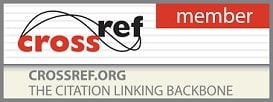- Multidisciplinary Journal
- Printed Journal
- Indexed Journal
- Refereed Journal
- Peer Reviewed Journal
ISSN Print: 2394-7500, ISSN Online: 2394-5869, CODEN: IJARPF
IMPACT FACTOR (RJIF): 8.4
Vol. 2, Issue 2, Part F (2016)
Drug adverse effects in medicine outpatient department An analysis in a tertiary care hospital of Bangladesh
Drug adverse effects in medicine outpatient department An analysis in a tertiary care hospital of Bangladesh
Author(s)
Abstract
Background: Adverse drug effects are common among patients receiving treatments in outpatient department due to lack of proper follow up of treatment. It causes decrease compliance to the treatment leading to treatment failure.
Background: Adverse drug effects are common among patients receiving treatments in outpatient department due to lack of proper follow up of treatment. It causes decrease compliance to the treatment leading to treatment failure.
Aim: The present study was aimed to analyze the pattern, causality and severity of the adverse drug effects complained by the patients at internal medicine outpatient department.
Materials and Method: It was a cross-sectional study done at outpatient department for a period of four months. Patients presenting with sign symptoms of adverse drug effects were included for this study. Each patient underwent a detailed evaluation by a consultant once they were medically stable.
Results: A total of 86 adverse drug effect cases were reported. Most of them are females (65.1%). Older age group (>60 years) were more prone to the side effects (37.2%). NSAIDs (31.4%) and the Antipsychotics (16.3%) were the commonest drugs. Drugs administered orally (62.8%) and taken by self without proper consultation (41.9%) caused most of the side effect. Gastrointestinal symptoms were the commonest complaints (47.7%). More than half of the complaints were reported within weeks (64%). Most of the cases (87.2%) were managed in outpatient settings without fatal complications. Conclusion: Detecting the adverse drug effects among patients at early stage will improve continuation and adherence to treatment.
Pages: 348-351 | 1191 Views 103 Downloads

How to cite this article:
Rubab Tarannum Islam, Dr. Ahmed Tanjimul Islam. Drug adverse effects in medicine outpatient department An analysis in a tertiary care hospital of Bangladesh. Int J Appl Res 2016;2(2):348-351.






 Research Journals
Research Journals